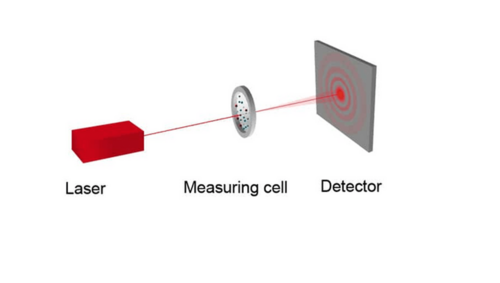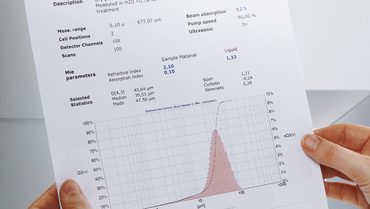
Particle sizing with laser scattering is actually quite easy: To measure the size of a particle it is irradiated by a laser beam.
The partial deflection of the laser light creates a characteristic ring-shaped intensity distribution behind the sample that is measured by a specially shaped detector. The distance of these rings is used to calculate the particle size: Large particles produce closely adjacent rings; smaller particles produce rings further apart. That is the principle.
Basic Terms
When illuminating a particle with light, various effects occur that together cause a weakening of the light beam. This extinction is basically the sum of absorption and the deflection of the light from the original direction.
During absorption, the particle absorbs part of the electromagnetic energy of the incident light and converts it mostly into heat. This phenomenon plays an important in the Mie theory.
Three different effects basically contribute to the deflecting of the incident light:
diffraction
reflection
refraction



